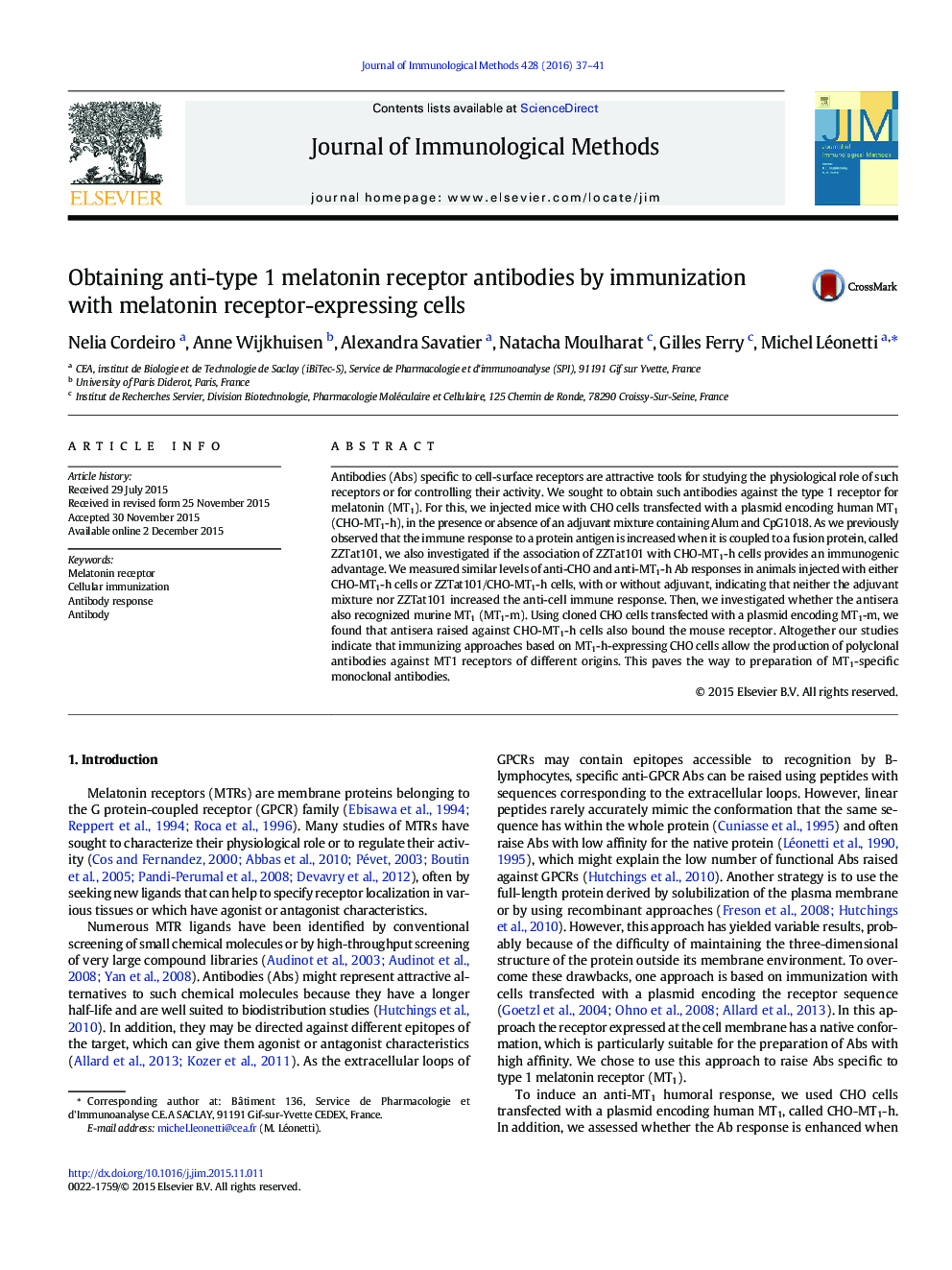| Article ID | Journal | Published Year | Pages | File Type |
|---|---|---|---|---|
| 2088035 | Journal of Immunological Methods | 2016 | 5 Pages |
Antibodies (Abs) specific to cell-surface receptors are attractive tools for studying the physiological role of such receptors or for controlling their activity. We sought to obtain such antibodies against the type 1 receptor for melatonin (MT1). For this, we injected mice with CHO cells transfected with a plasmid encoding human MT1 (CHO-MT1-h), in the presence or absence of an adjuvant mixture containing Alum and CpG1018. As we previously observed that the immune response to a protein antigen is increased when it is coupled to a fusion protein, called ZZTat101, we also investigated if the association of ZZTat101 with CHO-MT1-h cells provides an immunogenic advantage. We measured similar levels of anti-CHO and anti-MT1-h Ab responses in animals injected with either CHO-MT1-h cells or ZZTat101/CHO-MT1-h cells, with or without adjuvant, indicating that neither the adjuvant mixture nor ZZTat101 increased the anti-cell immune response. Then, we investigated whether the antisera also recognized murine MT1 (MT1-m). Using cloned CHO cells transfected with a plasmid encoding MT1-m, we found that antisera raised against CHO-MT1-h cells also bound the mouse receptor. Altogether our studies indicate that immunizing approaches based on MT1-h-expressing CHO cells allow the production of polyclonal antibodies against MT1 receptors of different origins. This paves the way to preparation of MT1-specific monoclonal antibodies.
